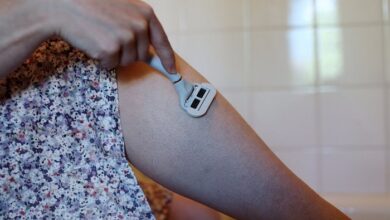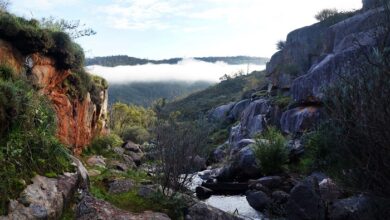Black Leopard Gecko: A Comprehensive Guide to Caring for Your Pet

Are you looking for a unique and fascinating pet that is relatively easy to care for? Consider the black leopard gecko! These small, nocturnal lizards are a popular choice among reptile enthusiasts due to their striking appearance and docile temperament. In this article, we’ll provide you with all the information you need to know to take care of your new pet, from housing and feeding to health and breeding.
Physical Characteristics of Black Leopard Geckos
Black leopard geckos are a subspecies of the commonly kept leopard gecko (Eublepharis macularius) that are known for their black coloration and bold white or yellow spots. They are typically smaller than their wild-type counterparts, growing to a maximum length of around 8-10 inches. Like all leopard geckos, they have a distinctive flat head, large eyes with vertical pupils, and a long, prehensile tail that they can shed if threatened.
Natural Habitat of Black Leopard Geckos
Black leopard geckos are native to the deserts of Pakistan and Afghanistan, where they live in rocky, arid environments. In the wild, they are nocturnal and spend most of their time hiding in crevices or burrows during the day to avoid the intense heat. They emerge at night to hunt insects and other small prey.
Housing and Setup
Terrarium Size and Type
When it comes to housing your black leopard gecko, the general rule of thumb is the bigger, the better. A 20-gallon long tank is the minimum size recommended for a single adult gecko, although larger enclosures will provide more space for them to explore and exercise. You should also ensure that the tank has a secure lid to prevent escapes.
Lighting and Heating
Like all reptiles, black leopard geckos require access to both heat and UVB lighting to stay healthy. A heat source like an under-tank heater or ceramic heat emitter should be used to maintain a temperature gradient of 85-90°F on the warm side of the tank and 75-80°F on the cool side. A UVB light should also be provided for 10-12 hours a day to support their overall health.
Substrate and Decorations
For substrate, you can use a variety of materials, including reptile carpet, paper towels, or coconut fiber. Avoid using loose substrates like sand or gravel, which can pose a choking hazard if ingested. You can also add some decorations to the tank, such as rocks, logs, or fake plants, to provide hiding spots and climbing opportunities.
Feeding and Nutrition
Diet and Nutritional Requirements
Black leopard geckos are insectivores, which means they require a diet consisting primarily of insects. The most commonly fed insects include crickets, mealworms, and dubia roaches. You can also offer occasional treats like waxworms.
Schedule
Adult black leopard geckos should be fed every 2-3 days, while juveniles should be fed daily to support their growth. You should offer a number of insects that your gecko can eat within 15 minutes, and remove any uneaten insects after this time to prevent them from roaming around the enclosure.
Handling and Temperament
Black leopard geckos are known for their docile temperament and are relatively easy to handle once they get used to being held. However, it’s important to approach your gecko slowly and gently, as sudden movements can startle them. You should also avoid handling your gecko too often, as they prefer to spend most of their time in their enclosure.
Health Concerns and Common Illnesses
Signs of Illness
Like all pets, black leopard geckos can be susceptible to a variety of health problems. Some common signs of illness include lethargy, loss of appetite, diarrhea, or swelling. If you notice any of these symptoms, you should consult a reptile veterinarian immediately.
Preventative Measures
To prevent illness, it’s important to maintain a clean and healthy environment for your gecko. This includes regularly cleaning the enclosure, providing fresh water, and ensuring that the temperature and humidity levels are appropriate. You should also avoid feeding your gecko wild-caught insects, as these can carry parasites or pesticides.
Treatment Options
If your gecko does become ill, treatment options will depend on the specific condition. In some cases, antibiotics or other medications may be necessary, while in other cases, supportive care like fluid therapy or hand-feeding may be required.
Breeding and Reproduction
Mating Process
Breeding black leopard geckos is relatively straightforward, but it’s important to ensure that both the male and female are healthy and of an appropriate age before attempting to breed them. The mating process usually involves introducing the male into the female’s enclosure, and then observing their behavior to ensure that copulation occurs.
Egg Incubation and Hatching
After copulation, the female will lay a clutch of eggs that must be incubated for around 45-60 days before hatching. During this time, it’s important to maintain a stable temperature and humidity level in the incubator to ensure that the eggs develop properly. Once the eggs hatch, the hatchlings should be kept separate from adult geckos to prevent aggression.
Black leopard geckos are fascinating and unique pets that are relatively easy to care for. By following the guidelines outlined in this article, you can provide your gecko with a healthy and happy life. Remember to always consult a reptile veterinarian if you have any concerns about your gecko’s health.
FAQs
- Can black leopard geckos live with other geckos?
- While black leopard geckos are generally docile, it’s not recommended to keep them with other geckos, as they may become aggressive towards each other.
- How often should I clean my gecko’s enclosure?
- You should clean your gecko’s enclosure at least once a month, or more frequently if necessary.
- Can I handle my gecko during the day?
- Black leopard geckos are nocturnal, so it’s best to handle them during the evening or early morning when they are most active.
- How can I tell if my gecko is male or female?
- Male geckos typically have larger heads and a row of pre-anal pores, while females have smaller heads and lack these pores.




